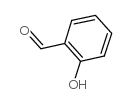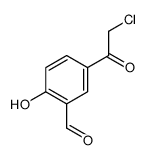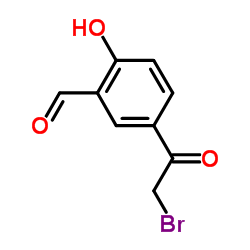18559-94-9
| 中文名 | 沙丁胺醇 |
|---|---|
| 英文名 | albuterol |
| 中文别名 |
1-(4-羟基-3-羟甲基苯基-2-(叔丁氨基)乙醇
舒喘灵 |
| 英文别名 |
(±)-Albuterol
Salbuvent (±)-Salbutamol Salbuven 3,6-Dihydroxy-1-methyl-5-oxo-3,5-dihydro-2H-indolium-betain 4-[2-(tert-Butylamino)-1-hydroxyethyl]-2-(hydroxymethyl)benzolol 3-HYDROXY-1-METHYL-5,6-INDOLINE-DIONE EINECS 242-424-0 Salbutan adrenochrome free base adraxone Salbutamol Albuterol D,L-ADRENOCHROME a1-[(tert-Butylamino)methyl]-4-hydroxy-m-xylene-a,a'-diol 4-Hydroxy-3-hydroxymethyl-a-[(tert-butylamino)methyl]benzyl Alcohol L-Adrenochrome,free base 3,6-dihydroxy-1-methyl-5-oxo-3,5-dihydro-2H-indolium betaine 2-(Hydroxymethyl)-4-{1-hydroxy-2-[(2-methyl-2-propanyl)amino]ethyl}phenol 2,3-dihydro-3-hydroxy-1-methyl-1H-indole-5,6-dione Salbutamol free base Airomir Asmol 3-hydroxy-1-methyl-2,3-dihydro-indole-5,6-dione (±)-a1-[[(1,1-Dimethylethyl)amino]methyl]-4-hydroxy-1,3-benzenedimethanol 1,3-Benzenedimethanol, α1-(((1,1-dimethylethyl)amino)methyl)-4-hydroxy- 1-Methyl-3-hydroxyindoline-5,6-dione 1,3-Benzenedimethanol, α-[[(1,1-dimethylethyl)amino]methyl]-4-hydroxy- Eolene Novosalmol 4-(2-(tert-Butylamino)-1-hydroxyethyl)-2-(hydroxymethyl)phenol 3-hydroxy-1-methylindoline-5,6-dione 4-[2-(tert-butylamino)-1-hydroxyethyl]-2-(hydroxymethyl)phenol MFCD00869868 Proventil 3-hydroxy-1-methyl-6-indolinedione |
| 描述 | Salbutamol是一种短效的β2肾上腺素受体激动剂,用于治疗哮喘和慢性阻塞性肺疾病(COPD)引发的支气管痉挛。 |
|---|---|
| 相关类别 |
| 密度 | 1.2±0.1 g/cm3 |
|---|---|
| 沸点 | 433.5±40.0 °C at 760 mmHg |
| 熔点 | 157-158ºC |
| 分子式 | C13H21NO3 |
| 分子量 | 239.311 |
| 闪点 | 159.5±17.9 °C |
| 精确质量 | 239.152145 |
| PSA | 72.72000 |
| LogP | 0.01 |
| 外观性状 | 白色至灰白色结晶固体 |
| 蒸汽压 | 0.0±1.1 mmHg at 25°C |
| 折射率 | 1.566 |
| 储存条件 | 库房通风低温干燥 |
| 稳定性 | Stable, but light sensitive. Incompatible with strong oxidizing agents. |
| 分子结构 | 1、 摩尔折射率:67.76 2、 摩尔体积(m3/mol):207.6 3、 等张比容(90.2K):550.0 4、 表面张力(dyne/cm):49.2 5、 极化率(10-24cm3):26.86 |
| 计算化学 | 1.疏水参数计算参考值(XlogP):无 2.氢键供体数量:4 3.氢键受体数量:4 4.可旋转化学键数量:5 5.互变异构体数量:3 6.拓扑分子极性表面积72.7 7.重原子数量:17 8.表面电荷:0 9.复杂度:227 10.同位素原子数量:0 11.确定原子立构中心数量:0 12.不确定原子立构中心数量:1 13.确定化学键立构中心数量:0 14.不确定化学键立构中心数量:0 15.共价键单元数量:1 |
| 更多 | 1. 性状:白色或近白色结晶性粉末。无臭,味苦。 2. 密度(g/mL,25/4℃):不确定 3. 相对蒸汽密度(g/mL,空气=1):不确定 4. 熔点(ºC):157-158 5. 沸点(ºC,常压):不确定 6. 沸点(ºC, 5.2kPa):不确定 7. 折射率:不确定 8. 闪点(ºC):不确定 9. 比旋光度(º):不确定 10. 自燃点或引燃温度(ºC):不确定 11. 蒸气压(kPa,25ºC):不确定 12. 饱和蒸气压(kPa,60ºC):不确定 13. 燃烧热(KJ/mol):不确定 14. 临界温度(ºC):不确定 15. 临界压力(KPa):不确定 16. 油水(辛醇/水)分配系数的对数值:不确定 17. 爆炸上限(%,V/V):不确定 18. 爆炸下限(%,V/V):不确定 19. 溶解性:易溶于乙醇,溶于水,略溶于乙醚。其硫酸盐为白色至淡黄色结晶性粉末。易溶于水,溶于乙醇,不溶于氯仿或乙醚 |
|
Section 1. Chemical Product and Company Identification AlbuterolCatalog AL155 Common Name/ Number(s). Trade Name CAS#18559-94-9
Manufacturer RTECSSJ7450000 SPECTRUM QUALITY PRODUCTS INC. TSCATSCA 8(b) inventory: No products were found. Commercial Name(s)Salbutamol CI# Not available. Synonymalpha'-[[(1,1-Dimethyl)amino]methyl]-4-hydroxy-1,3-benzenedimethanol IN CASE OF EMERGENCY Chemical Name Chemical FamilyNot available.CALL (310) 516-8000 C13H21NO3 Chemical Formula SPECTRUM QUALITY PRODUCTS INC. Section 2.Composition and Information on Ingredients Exposure Limits TWA (mg/m3)STEL (mg/m3) CEIL (mg/m3) NameCAS #% by Weight 1) Albuterol18559-94-9100 Toxicological DataAlbuterol on IngredientsLD50: Not available. LC50: Not available. Section 3. Hazards Identification Potential Acute Health Effects Hazardous in case of eye contact (irritant), of ingestion. Slightly hazardous in case of skin contact (irritant), of inhalation. Potential Chronic HealthCARCINOGENIC EFFECTS: Not available. EffectsMUTAGENIC EFFECTS: Not available. TERATOGENIC EFFECTS: Not available. DEVELOPMENTAL TOXICITY: Not available. The substance is toxic to lungs, mucous membranes. Repeated or prolonged exposure to the substance can produce target organs damage. Albuterol Section 4. First Aid Measures Eye ContactCheck for and remove any contact lenses. In case of contact, immediately flush eyes with plenty of water for at least 15 minutes. Get medical attention. Skin ContactWash with soap and water. Cover the irritated skin with an emollient. Get medical attention if irritation develops. Serious Skin ContactNot available. InhalationIf inhaled, remove to fresh air. If not breathing, give artificial respiration. If breathing is difficult, give oxygen. Get medical attention. Serious InhalationNot available. IngestionDo NOT induce vomiting unless directed to do so by medical personnel. Never give anything by mouth to an unconscious person. If large quantities of this material are swallowed, call a physician immediately. Loosen tight clothing such as a collar, tie, belt or waistband. Serious IngestionNot available. Section 5. Fire and Explosion Data Flammability of the Product May be combustible at high temperature. Auto-Ignition Temperature Not available. Flash PointsNot available. Flammable LimitsNot available. Products of CombustionThese products are carbon oxides (CO, CO2), nitrogen oxides (NO, NO2...). Fire Hazards in Presence of Not available. Various Substances Explosion Hazards in Presence Risks of explosion of the product in presence of mechanical impact: Not available. Risks of explosion of the product in presence of static discharge: Not available. of Various Substances SMALL FIRE: Use DRY chemical powder. Fire Fighting Media and InstructionsLARGE FIRE: Use water spray, fog or foam. Do not use water jet. Not available. Special Remarks on Fire Hazards Special Remarks on Explosion Not available. Hazards Section 6. Accidental Release Measures Small SpillUse appropriate tools to put the spilled solid in a convenient waste disposal container. Finish cleaning by spreading water on the contaminated surface and dispose of according to local and regional authority requirements. Large SpillUse a shovel to put the material into a convenient waste disposal container. Finish cleaning by spreading water on the contaminated surface and allow to evacuate through the sanitary system. Albuterol Section 7. Handling and Storage PrecautionsKeep away from heat. Keep away from sources of ignition. Empty containers pose a fire risk, evaporate the residue under a fume hood. Ground all equipment containing material. Do not breathe dust. Avoid contact with eyes. Wear suitable protective clothing. If you feel unwell, seek medical attention and show the label when possible. StorageKeep container tightly closed. Keep container in a cool, well-ventilated area. Section 8. Exposure Controls/Personal Protection Engineering ControlsUse process enclosures, local exhaust ventilation, or other engineering controls to keep airborne levels below recommended exposure limits. If user operations generate dust, fume or mist, use ventilation to keep exposure to airborne contaminants below the exposure limit. Personal ProtectionSplash goggles. Lab coat. Dust respirator. Be sure to use an approved/certified respirator or equivalent. Gloves. Personal Protection in Case of Splash goggles. Full suit. Dust respirator. Boots. Gloves. A self contained breathing apparatus should be used a Large Spillto avoid inhalation of the product. Suggested protective clothing might not be sufficient; consult a specialist BEFORE handling this product. Exposure LimitsNot available. Section 9. Physical and Chemical Properties Physical state and appearance Solid.OdorNot available. Not available. Taste Molecular Weight239.32 g/mole Not available. Color Not available. pH (1% soln/water) Boiling PointDecomposes. Melting Point151°C (303.8°F) Critical TemperatureNot available. Specific GravityNot available. Not applicable. Vapor Pressure Vapor DensityNot available. Not available. Volatility Odor ThresholdNot available. Water/Oil Dist. Coeff.Not available. Ionicity (in Water)Not available. Dispersion PropertiesNot available. SolubilityNot available. Section 10. Stability and Reactivity Data StabilityThe product is stable. Instability TemperatureNot available. Conditions of InstabilityNot available. Incompatibility with variousNot available. substances CorrosivityNon-corrosive in presence of glass. Albuterol Special Remarks onNot available. Reactivity Special Remarks onNot available. Corrosivity PolymerizationWill not occur. Section 11. Toxicological Information Routes of EntryEye contact. Ingestion. Toxicity to AnimalsLD50: Not available. LC50: Not available. Chronic Effects on Humans Causes damage to the following organs: lungs, mucous membranes. Other Toxic Effects onHazardous in case of ingestion. HumansSlightly hazardous in case of skin contact (irritant), of inhalation. Special Remarks onNot available. Toxicity to Animals Special Remarks onPasses through the placental barrier in human. Chronic Effects on Humans Special Remarks on otherNot available. Toxic Effects on Humans Section 12. Ecological Information EcotoxicityNot available. BOD5 and CODNot available. Products of BiodegradationPossibly hazardous short term degradation products are not likely. However, long term degradation products may arise. Toxicity of the ProductsThe products of degradation are more toxic. of Biodegradation Special Remarks on theNot available. Products of Biodegradation Section 13. Disposal Considerations Waste Disposal Section 14. Transport Information DOT ClassificationNot a DOT controlled material (United States). IdentificationNot applicable. Special Provisions forNot applicable. Transport DOT (Pictograms) Albuterol Section 15. Other Regulatory Information and Pictograms No products were found. Federal and State Regulations California Proposition 65 Warnings Other RegulationsOSHA: Hazardous by definition of Hazard Communication Standard (29 CFR 1910.1200). WHMIS (Canada) CLASS D-2A: Material causing other toxic effects (VERY TOXIC). Other Classifications DSCL (EEC)R36- Irritating to eyes. Health Hazard HMIS (U.S.A.)2 National Fire Protection 1 Flammability 1 Association (U.S.A.) Fire Hazard 2 0 Reactivity Health Reactivity 0 Specific hazard Personal Protection E WHMIS (Canada) (Pictograms) DSCL (Europe) (Pictograms) TDG (Canada) (Pictograms) ADR (Europe) (Pictograms) Protective Equipment Gloves. Lab coat. Dust respirator. Be sure to use an approved/certified respirator or equivalent. Wear appropriate respirator when ventilation is inadequate. Splash goggles. SECTION 16 - ADDITIONAL INFORMATION N/A |
CHEMICAL IDENTIFICATION
HEALTH HAZARD DATAACUTE TOXICITY DATA
|
| 符号 |

GHS07 |
|---|---|
| 信号词 | Warning |
| 危害声明 | H302 |
| 警示性声明 | P301 + P312 + P330 |
| 个人防护装备 | dust mask type N95 (US);Eyeshields;Gloves |
| 危害码 (欧洲) | Xn:Harmful; |
| 风险声明 (欧洲) | R22 |
| 安全声明 (欧洲) | S36 |
| 危险品运输编码 | UN 3249 |
| WGK德国 | 3 |
| RTECS号 | ZE4400000 |
| 包装等级 | III |
| 危险类别 | 6.1(b) |
| 海关编码 | 2922509090 |
| 上游产品 8 | |
|---|---|
| 下游产品 1 | |
| 海关编码 | 2922509090 |
|---|---|
| 中文概述 | 2922509090. 其他氨基醇酚、氨基酸酚及其他含氧基氨基化合物. 增值税率:17.0%. 退税率:13.0%. 监管条件:AB. 最惠国关税:6.5%. 普通关税:30.0% |
| 申报要素 | 品名, 成分含量, 用途, 乙醇胺及其盐应报明色度, 乙醇胺及其盐应报明包装 |
| 监管条件 | A.入境货物通关单 B.出境货物通关单 |
| 检验检疫 | R.进口食品卫生监督检验 S.出口食品卫生监督检验 |
| Summary | 2922509090. other amino-alcohol-phenols, amino-acid-phenols and other amino-compounds with oxygen function. VAT:17.0%. Tax rebate rate:13.0%. . MFN tariff:6.5%. General tariff:30.0% |








![2-Chloro-1-[3-[[(1,1-dimethylethyl)imino]methyl]-4-hydroxyphenyl]ethanone结构式](https://image.chemsrc.com/caspic/413/115787-57-0.png)
![2-Bromo-1-[3-[[(1,1-dimethylethyl)imino]methyl]-4-hydroxyphenyl]ethanone结构式](https://image.chemsrc.com/caspic/461/115787-56-9.png)
![5-[[(1,1-Dimethylethyl)amino]acetyl]-2-hydroxybenzaldehyde hydrochloride结构式](https://image.chemsrc.com/caspic/075/115787-53-6.png)